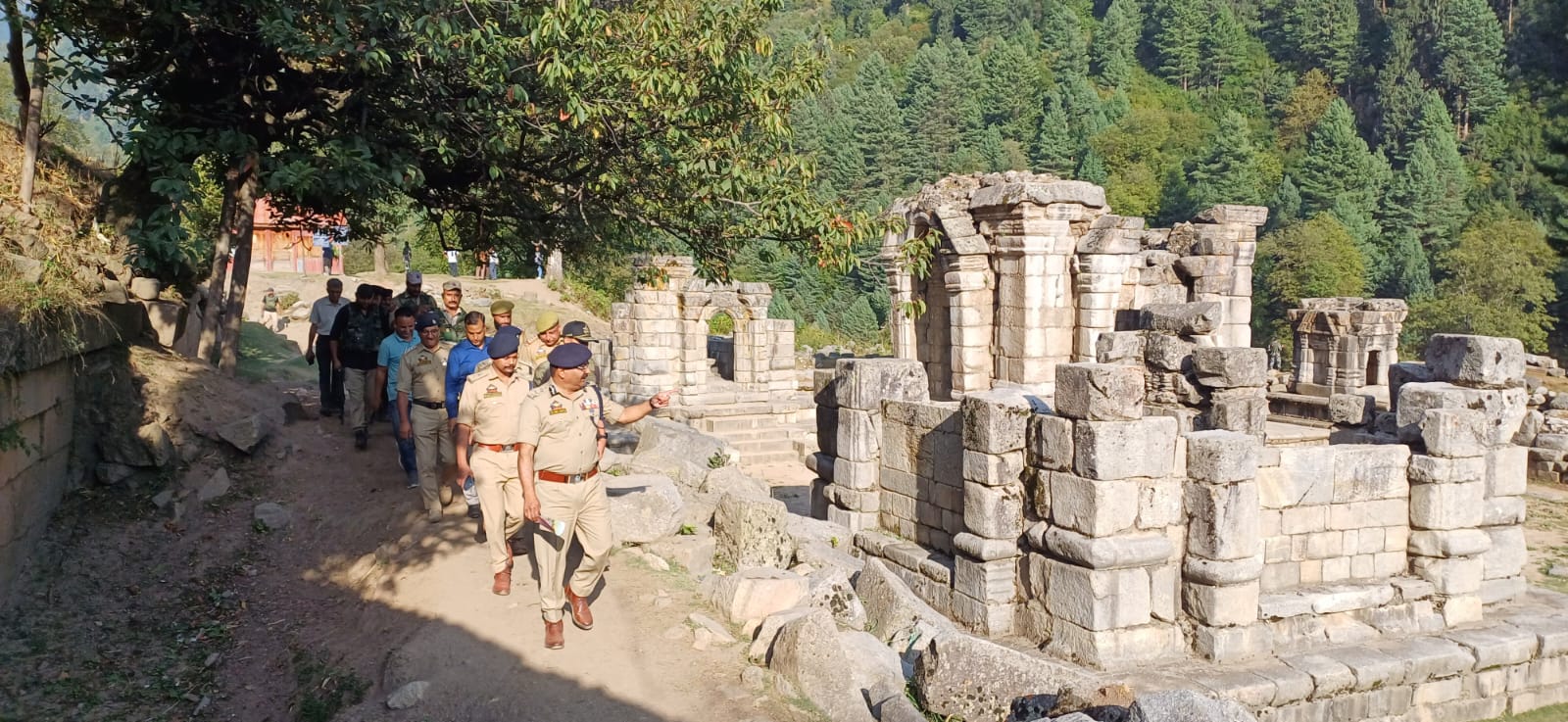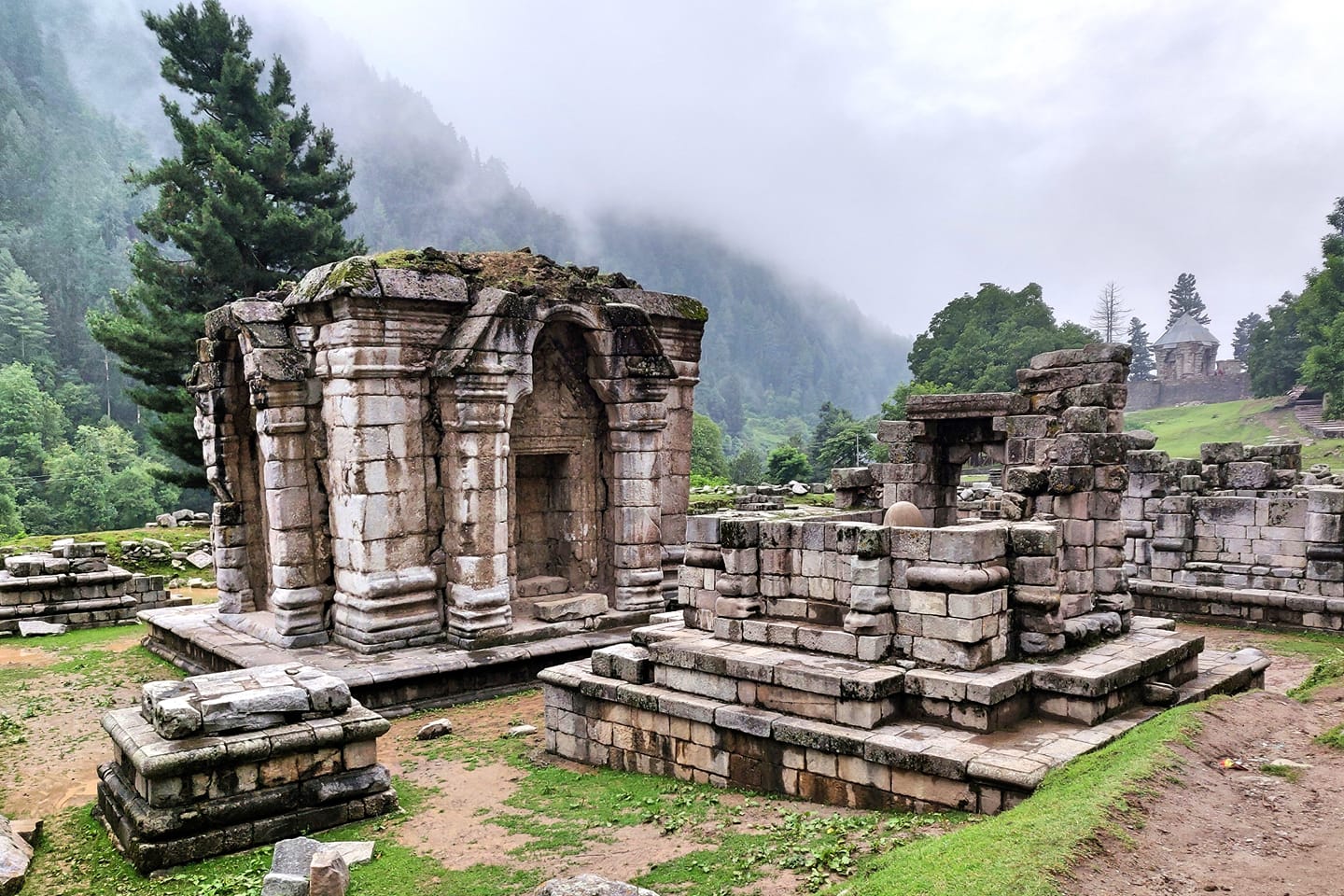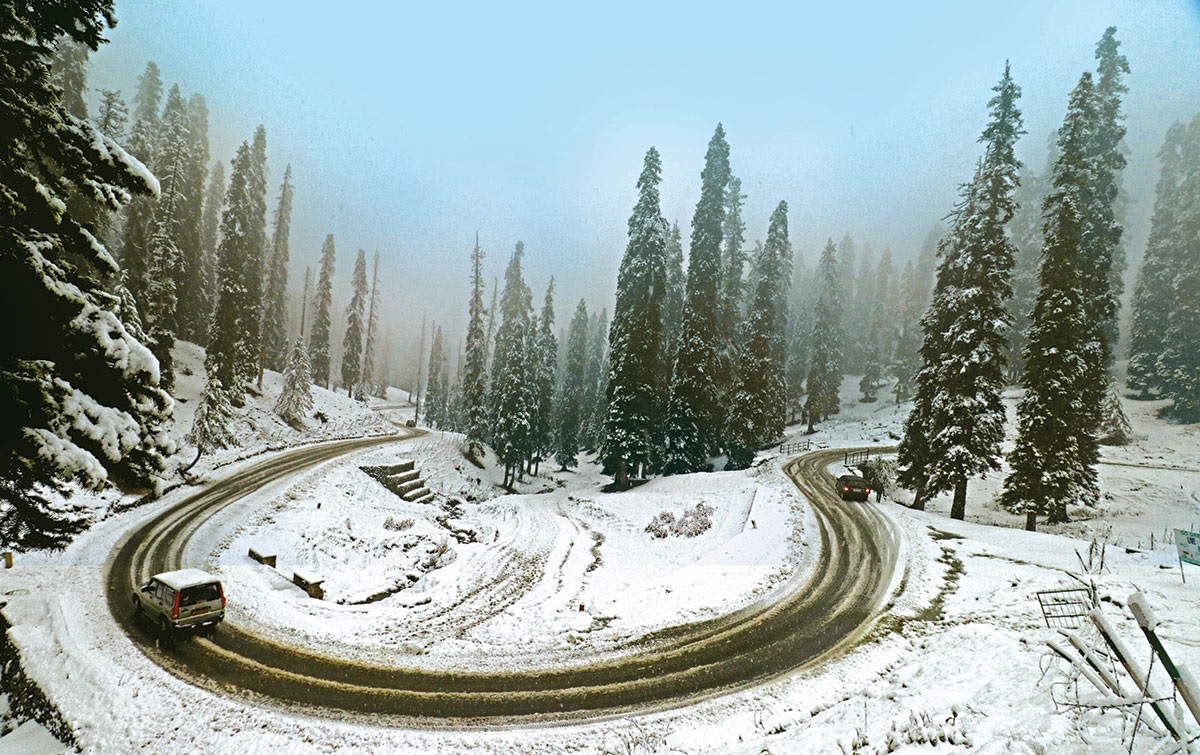Apart from being the base camp for three vital treks, Naranag serves as one of the most important archaeological sites in Kashmir and has often been a centre of study and research for historians, reports Syed Shadab Ali Gillani

Known for its beauty and serendipity, Kashmir is also interestingly famous for its architectural ruins. Many temple ruins here are as popular as other natural tourist spots, attracting visitors from many nooks and corners of the world.
One such historical temple situated is the Naranag, a frequently thronged place located on the foothills of Mount Harmukh. Interestingly the name Harmukh means ‘every face’, serving as the stepping stone for the trekking of the majestic mountains.
Situated on the left bank of the Wangath Rivulet, which is a tributary of the famous Sindh River, Naranag is a prominent tourist destination representing visuals that captivate both the hearts and souls of the onlookers. This small village falls in Ganderbal district and beholds the visitors with its stunning visuals. The village in itself is a valley which is home to several meadows, surrounded by beautiful mountains. It is the last village in the Wangath Valley.
It is said that during winters when the whole valley gets covered with snow, the place becomes a visual treat just like Gulmarg. It becomes a hot spot for skiing and other winter-based expeditions. This beautiful place is located about 50 kilometres from the capital city of Srinagar and is often referred to as “a trekker’s paradise”.

Adventures and Fun Activities
Adventurers and environment enthusiasts throughout the world are enthralled by the splendour of this place. In addition to being a destination for ecotourism, this place sees a lot of visitors each year, especially during October. Alongside the monuments, there is a stream that is nourished by glaciers and the mountaintop Gangabal Lake. Except for the native Gujjar tribes who bring their livestock to graze on the terraces, the mountains remain largely deserted. This place is such a bliss and gives peace of mind.
Some exuberant activities in Naranag involve sightseeing, exploration, photography, skiing, trekking etc. People with their families often throng the place for outings and picnics, especially on Sundays. Schoolchildren also visit the place for excursions and on historical tours.
The place is also famous for its brown trout fishes and people often come here for camping and fishing. This town also serves as the starting point for hikes up Mount Harmukh, Gangabal, and Satsar.
The Treks
The hamlet of Naranag serves as the base for three treks: Gangbal Lake, Dumail Trek and Marchoi Valley. All of these treks are very famous with both the local and non-local trekkers.
One of the most splendid spots in Kashmir to go on a winter hike is the Marchoi Valley area. The trail travels through the Wangath area, passing through two different river basins, beginning in the charming village of Naranag. This clean and tranquil area transforms into a snowy fairyland during the season, away from the commotion of Kashmir’s popular and busy winter resorts. This four-day hike is one of the best winter experiences in the world, mixing peaceful forest treks with thrilling snow bridges, stunning panoramic vistas, gorgeous white meadows, and lovely riverside campsites. Both seasoned trekkers and beginners can hike this trail.
Dumail is a gorgeously situated untouched forest clearing at the confluence of two rivers at the bottom of the river valley. In the summer, nomadic communities and local shepherds who use this trail to travel to higher grazing areas for their animals frequently stop here on their journey to Naranag. The Dumail campsite is accessible via a peaceful riverside route that is bordered by large pine, fir, and birch trees as well as a few nomadic villages. The enticing campsite is placed against the valley’s most scenic backdrop, surrounded by dense forests, towering mountains, and the bank of a crystal-clear stream that ebbs and gushes nearby.
The most well-liked and trendy short hike in the Valley is to Gangbal Lake. The journey involves visiting two stunning alpine lakes that are situated 5146 meters above sea level in the shadow of Mount Harmukh. Nararnag is the trailhead for this lovely hike. The journey to Gangbal is a moderately strenuous hike, with around 60 per cent of the trek passing through steep ascends. The magnificent views of this Himalayan region will wow you as you ascend to the summit of the ridge known as Budsheri Summit. You will discover meadows, valleys, waterfalls, snow-capped mountains, and three alpine lakes during the journey.
History and Scriptures
Ancient writer, Kalhana, in his earliest historical writings, mentioned the temples in Wangath Valley in his Rajtarangini. He wrote how the King Ashoka’s son, Jaluka built temples dedicated to all forms of Lord Shiva like Lord Bhuteswara, Jyestarudra and Muthas at Wangath valley during 220 BC.
Amongst the many beliefs, one such prevalent belief within the Hindu community prevails that Lord Shiva, who saved Goddess Parvati or Jyestha from demons at this site, married Parvati who later took the name of Jyesthesa. Others also believe that Mount Harmukh is equivalent to Mount Kailash as the residing spot of Lord Shiva.
During his era, King Lalitaditya Muktapida, one of the famous and powerful rulers of Kashmir from the Karkota dynasty summoned to develop the temples through the donations he made to this place. He dedicated a temple to Shiva Jyeshthesha. As per Kalhana, the many kings and noblemen who came ahead ransacked the treasures of the temple.
Temple Ruins and Architecture
Dedicated to Lord Shiva, historians say that the temple was built by Kayastha Naga Karkota Dynasty’s Lalitaditya Muktapida in the eighth century. Being the main tourist attraction, the cluster of temples lie at a distance of about 200 meters from one another, however, face to face.
This site also serves as one of the most important archaeological sites in Kashmir and has often been a centre of study and research for historians. The art of the eighth century is visible in its building and architecture. The government, however, has built barriers to keep people away from encroaching on the territory of the temples. This temple is made in the traditional Aryan style that prevailed in Kashmir in past.
As per historians, the adopted styles of architecture were inspired by both foreign and indigenous temple architectural styles. Like Martand, Bunyar, Pandrethan and Payar the structure has a main shrine built on a raised platform known as adhisthana with a flight of stairs leading to the adhisthana. The main shrine usually consists of a single square chamber, which is the garbha-griha (sanctum sanctorum). There comprises a small mandapa (hall) in front. The sanctum of the temple hosts a huge Shiva Linga.
The entrance of the temple complex is further composed of six temples called Shiva-Jyeshthesa or Jyestharudra, situated inside an enclosure of the western complex. The second group of temples in the eastern complex is enclosed inside a massive stone wall but is available in ruins. The largest one is dedicated to Lord Buteshwara. Amidst the eastern and the western groups stands the central pavilion, completely in ruins, with almost 30 monolithic bases that seemed to be a part of a pillared pavilion.
Scenery and Hospitality
Naranag hosts a plethora of enticing views for locals and tourists. Being a trekker’s heaven for people who love to explore the beautiful trekking trails, dozens visit the Naranag-Gangabal trek every year in their expeditions to unravel the alluring mystery involved in their lakes. The lush green meadows surrounding the Dumail and Marchoi trekking trails are a must-watch treat to the soul. The pine forests within its steep climbs through Butsheri meadows create a challenging trek in one of Kashmir’s most beautiful and serene Himalayas. These expeditions remain open every year.
Tourists visiting the places laud the hospitality of the locals living here. “Many of our guests visiting annually have become our friends now. I have grown so much of fondness towards them that we wait every year for them to witness the best care and hospitality we have in store for them”, said one of the locals from the Gujjar community who lives in the up-hills of Naranag. When asked as to what drives him to shower the best hospitality towards their guests, he replies vibrantly, “Their visitations are our guests and it makes us feel good to help and serve them in whatever capacity we can.”
Extending in the foothills of the Pir Panchal range, which extends southeast to connect with other popular trekking points, so many tourists come every year to take in the breath-taking aura of the Eutopia-filled moments making it a ritual to return to this destination.
Serving as a place of pilgrimage and a heritage destination for tourists around the world, people visiting this place believe that they always belonged to Naranag ever since they found it. Upon asking them why they choose to return to this place yearly, the reply of one of the visitors is awe-striking.
“Because eventually, you return home at the end. Don’t you?”, smiled John, a visitor from Germany who travelled for years to find tranquillity in places and eventually succeeded.















